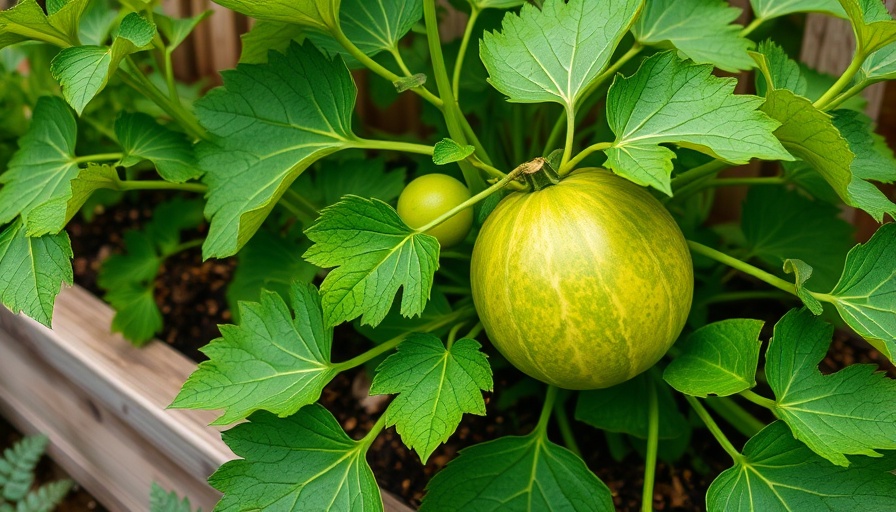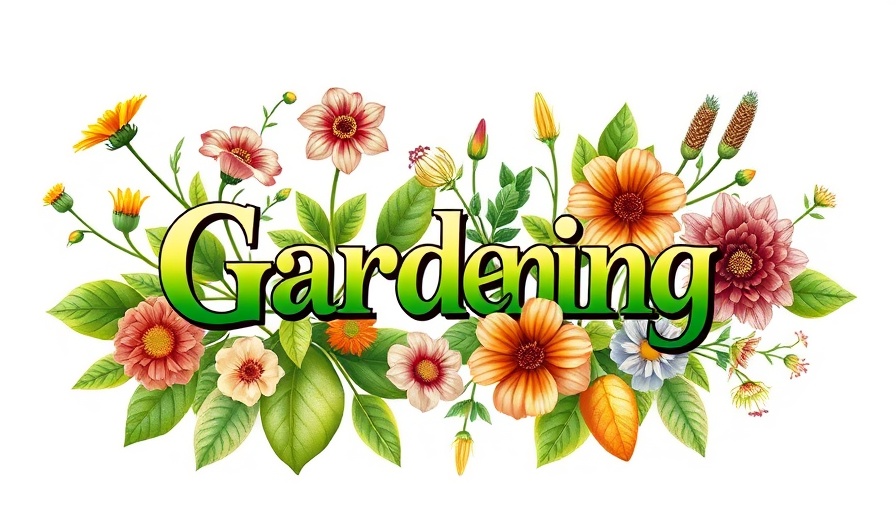
Growing Cantaloupe: A Gardener's Delight
Cantaloupe is a rewarding and tasty addition to any home garden, and growing them from seeds can be a straightforward and enjoyable process. If you're a homeowner looking to step up your gardening game, this guide will take you through the essential steps to successfully cultivate cantaloupe, ensuring a bountiful harvest by following simple techniques that anyone can master.
The Perfect Growing Conditions for Cantaloupes
Cantaloupes thrive in warm temperatures and need at least eight hours of sunlight a day. Therefore, when selecting the best location in your garden, choose a sunny spot where the soil is well-drained and enriched with organic matter. Ideally, a soil pH of between 6.0 and 7.0 is optimal for cantaloupe growth. Gardening experts suggest incorporating compost into your planting area to provide essential nutrients to the vines.
Seed Planting Techniques for Success
Home gardeners can choose between two primary methods of growing cantaloupe from seed: direct sowing in the garden or starting seeds indoors. If planting directly in the garden, ensure the soil temperature is at least 70°F to promote germination. If you are in a cooler climate, consider starting seeds indoors about six weeks before your last frost date to extend your growing season.
Mastering the Right Planting Time
Timing is crucial for growing healthy cantaloupes. After the last frost date in your area, give it time to warm up—generally, you should wait at least two weeks. For example, in warmer climates like Pennsylvania, wait until June 1st or later for planting. Monitoring soil temperature is also essential; you can use black plastic to warm the soil more quickly. This method not only helps with germination but also acts as a mulch once the seeds are planted.
Vertical Gardening: Space-Saving Cantaloupe Techniques
For homeowners with limited garden space, utilizing vertical gardening techniques can make a significant difference. Train your cantaloupe vines to grow up trellises or fences, allowing them to thrive without sprawling over your entire garden. This not only saves space but also protects the developing fruits from soil-borne diseases and pests.
Post-Planting Care: Nurturing Your Cantaloupes
Once planted, regular care is crucial. Water your plants deeply but infrequently, ensuring the soil remains moist but not soggy. Mulching around the base of the plants can help retain moisture and suppress weeds. As the vines grow, keep an eye out for pests and diseases, promptly addressing any issues as they arise. Fertilizing with a balanced fertilizer during the growth phase will also ensure your cantaloupes are healthy and productive.
Harvesting Your Fresh Cantaloupes
As the fruits develop, knowing when to harvest is key for taste and texture. Cantaloupes generally take about 70-80 days to mature from seed. Look for certain indicators: the development of a netted skin pattern, lighter color at the blossom end, and a sweet aroma. Gently twist or cut the fruit from the vine when they are ripe to avoid damaging the plant.
Final Thoughts: Enjoying Your Cantaloupe Harvest
There’s nothing quite like enjoying the fruits of your labor with homegrown cantaloupe. By following these simple steps and adjusting your techniques based on your local climate and growing conditions, you’re setting yourself up for a fruitful planting season. So why wait? Start your cantaloupe garden today, and soon you'll be relishing delicious, fresh melons straight from your yard.
Remember, every gardener started as a beginner. Embrace the process and watch your gardening skills grow alongside your cantaloupes!
 Add Row
Add Row  Add
Add 


Write A Comment